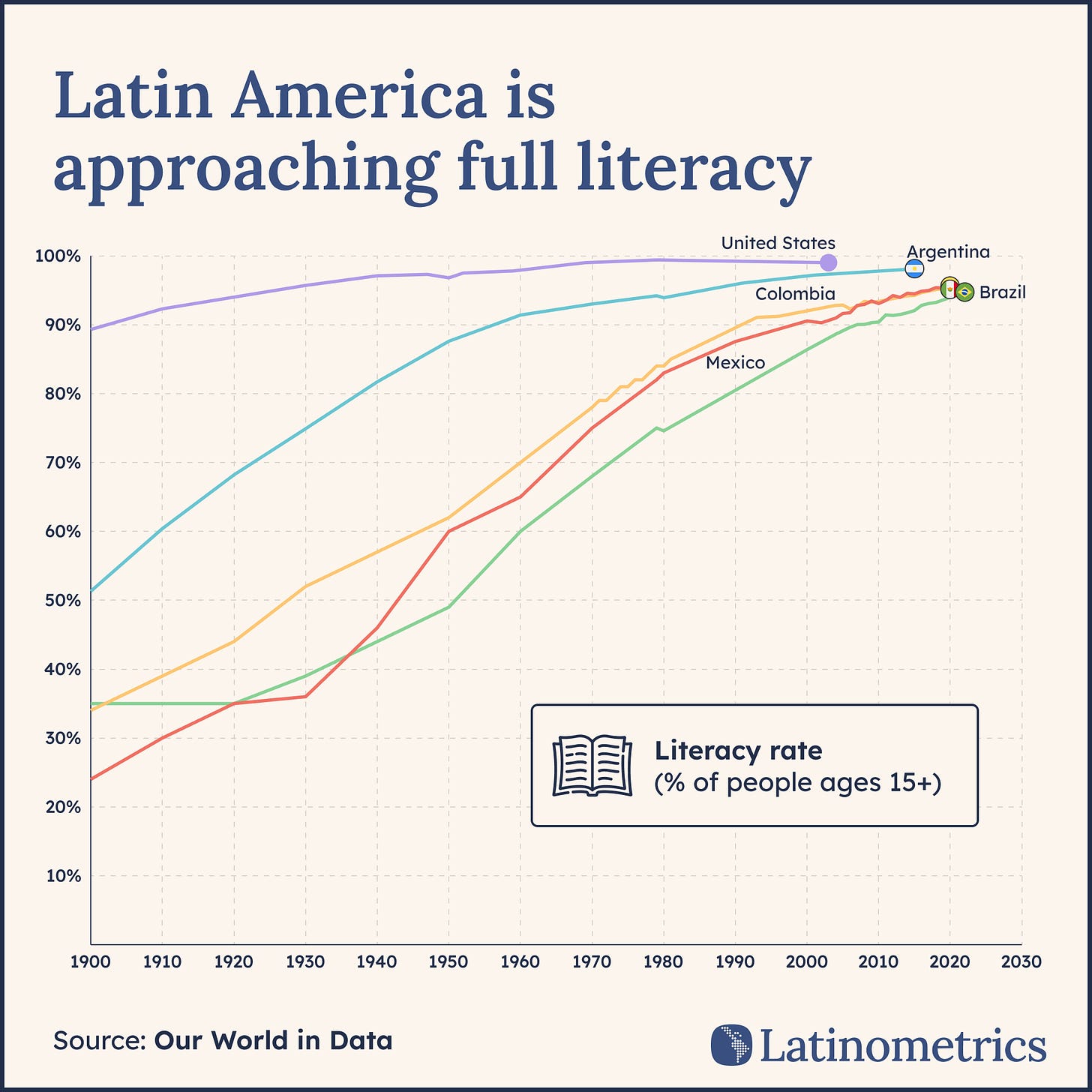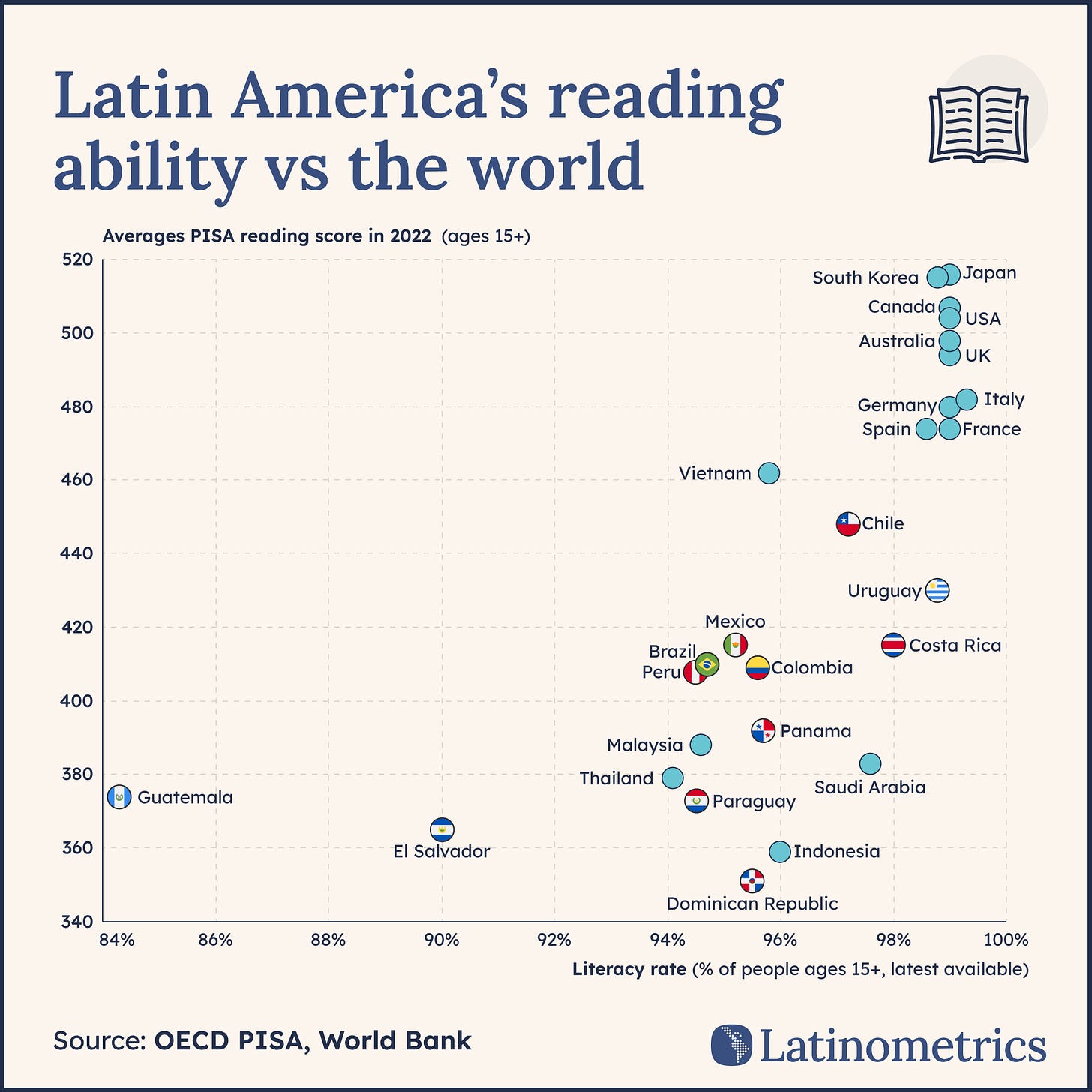- Latinometrics
- Posts
- 📙 Literacy
📙 Literacy
Latin Americans are more literate than ever. But the fight is far from over.
Welcome to Latinometrics. We bring you Latin American insights and trends through concise, thought-provoking data visualizations.
📢 Showcase your brand to Latinometrics’ 21K+ engaged readers. Book ad space.

Literacy Rates 📚
Here’s a bit of excellent news for your Tuesday: over 90% of Latin America is literate.
You might shrug, wonder if there aren’t more important things to focus on this week such as Veneuzela’s election crisis or the way in which immigration is once more shaping domestic politics within the United States.
But you know the drill: we’re all about giving the region its flowers where deserved, and watering those flowers where needed.
First the positive: Latin America is nearing full literacy, with almost 100% of the citizens of the region’s four largest countries – Brazil, Mexico, Colombia, and Argentina – able to read and write.

Latin America is approaching full literacy
Argentina leads the way, with the country having long ago emerged as an impressive outlier compared to its peers. Elsewhere, though, we should highlight that the situation is less rosy; if the Southern Cone is Latin America’s most literate region, then the Northern Triangle is perhaps its least.
It may go without saying, but literacy is a critical component of human development—perhaps even the most critical. Half of the nearly 2B people worldwide living in poverty cannot read or write, though it’s worth noting that 200 years ago only about 12% of humans worldwide were literate. So there’s been lots of progress in these last few centuries.
Within Latin America, there’s clearly been an impressive change since the early 20th century. However, education is far from a one-off battle, and today the region needs to reprioritize its students.

Latin America’s reading ability vs the world
Looking at Latin America’s reading scores in reading on the PISA global standardized test, the region’s countries tend to outperform many developing-country peers in areas like Southeast Asia, for example, but lag more developed countries.
For example, students in local success stories like Chile and Uruguay tend to score roughly 50 points fewer on average than their European or OECD counterparts. That difference is not just seen in test scores, but can reflect the ability of these students to earn higher salaries globally or even just solve their home countries’ problems.
The COVID-19 pandemic in particular has wreaked havoc on Latin American education systems, as students spent months to even years staying home, missing classes, or being unable to connect virtually. Not to mention, the rise in poverty seen as of late in countries like Argentina has damaged educational performance; after all, missing meals makes it harder to study, stay focused, or perform well in school.
Latin America’s young people are its future, and every possible resource must be employed to helping them excel academically and eventually professionally. We know education is a key which opens many doors—now let’s help our students make it down the hallway.
This week we were called “misleading and dishonest intellectually.” For posting about only the performance of the last 5 years of Latin American bonds. Do you agree with Christian? Reply to this email and let us know.

Feedback or chart suggestions? Reply to this email, and let us know!
Join the discussion on social media, where we’ll be posting today’s charts throughout the week.
Comment of the week 🗣️